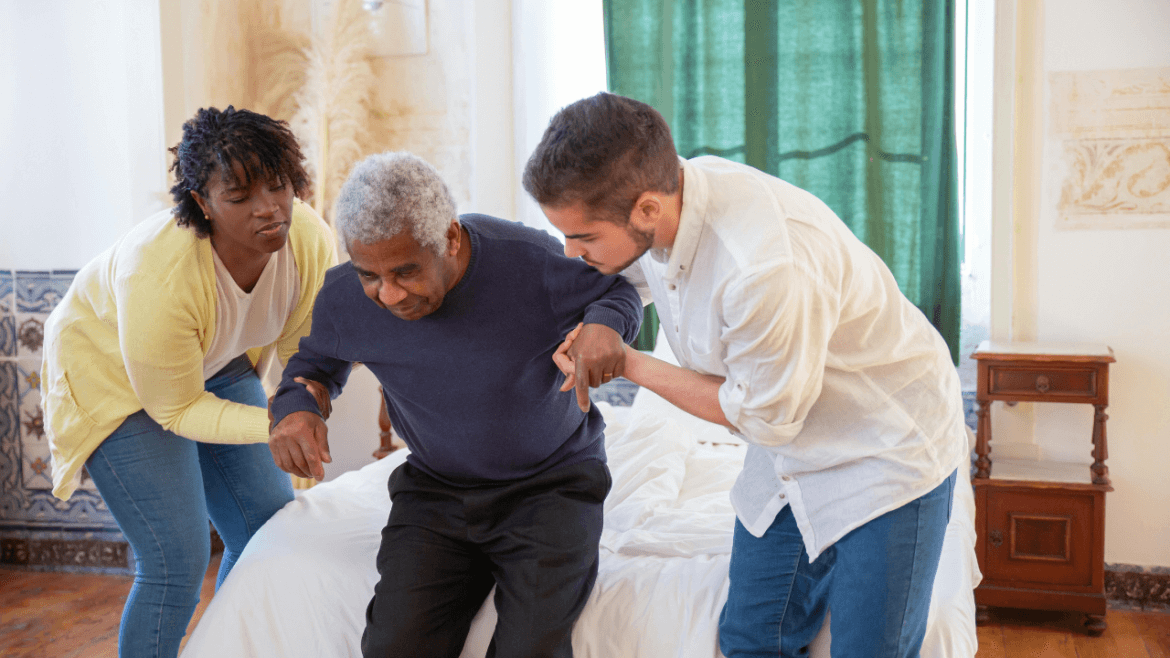Did you know that Leading Edge Senior Care has a Dementia Support Group? We meet monthly in Mesa. For more details <click here>
Symptoms Of Rheumatoid Arthritis In The Feet For Seniors
Understanding Rheumatoid Arthritis in Seniors’ Feet
Rheumatoid arthritis (RA) is a chronic autoimmune disease that can profoundly impact the lives of seniors. While it often targets the joints of the hands, it is also common for it to affect the feet.
Recognizing the symptoms in this area can help in seeking timely treatment, ultimately improving quality of life. Seniors already face challenges with mobility, and issues in the feet only amplify these difficulties.
What Is Rheumatoid Arthritis?
RA is not just another type of arthritis. Unlike osteoarthritis, which results from wear and tear, RA is an autoimmune condition where the body’s immune system mistakenly attacks its joints. This causes inflammation, pain, and sometimes long-term damage to the joints and surrounding tissues.
When RA affects the feet, it can make even simple movements like walking or standing incredibly painful. Seniors may find themselves less active, which can lead to further complications, including muscle weakness and reduced overall health.
Early Signs in the Feet
For seniors, the early symptoms of RA in the feet might seem minor. They may notice occasional stiffness or discomfort in their toes. This stiffness often feels worse in the morning or after periods of inactivity. Swelling is another common sign, particularly around the ball of the foot or the ankles. Seniors might think they’ve simply overdone it on their feet, but the underlying cause is often inflammation caused by RA.
It’s crucial not to dismiss these early signs. The sooner RA is diagnosed, the more effective the treatment options can be in slowing its progression.
Common Symptoms of RA in the Feet
Over time, the symptoms in the feet become more pronounced. Swelling tends to increase and may lead to noticeable changes in the shape of the foot. Seniors might experience severe pain when bearing weight, making walking increasingly difficult. Bunions, claw toes, and flat feet can develop as RA alters the structure of the joints.
Another common symptom is tenderness along the soles of the feet, which can feel like stepping on pebbles. This pain is not only physically challenging but can also lead to emotional frustration. Seniors may start avoiding outings or activities they once loved due to discomfort or embarrassment about changes in their feet.
How RA Impacts Daily Life
The feet are critical to mobility and independence. When rheumatoid arthritis targets this area, seniors may struggle with everyday activities. Tasks like climbing stairs, walking to the mailbox, or even standing in the kitchen become overwhelming. The pain and physical limitations can lead to feelings of isolation and helplessness. Emotional well-being is closely tied to physical health, and the chronic nature of RA can lead to depression or anxiety if left unchecked.
It’s not uncommon for seniors with RA in their feet to rely more heavily on family members or caregivers for assistance. This dependency can feel disheartening for individuals who once prided themselves on their independence. The ripple effects of RA extend beyond physical pain; they touch every aspect of a senior’s life.
Diagnosing RA in the Feet
Prompt diagnosis is key. Seniors experiencing persistent foot pain, swelling, or stiffness should consult a healthcare professional. A podiatrist or rheumatologist can evaluate symptoms and recommend appropriate diagnostic tests. These often include X-rays or MRI scans to assess joint damage and inflammation levels. Blood tests can also help confirm RA by detecting markers like rheumatoid factor or anti-cyclic citrullinated peptide antibodies.
Early diagnosis allows for a proactive approach to treatment, which can slow the disease’s progression and alleviate symptoms.
Treatment Options for Seniors
While there is no cure for rheumatoid arthritis, various treatment options can help manage symptoms and improve quality of life. Medications such as disease-modifying antirheumatic drugs (DMARDs) or biologics target the underlying inflammation, while nonsteroidal anti-inflammatory drugs (NSAIDs) provide temporary pain relief. Physical therapy is also invaluable for maintaining mobility and strengthening the muscles around the affected joints.
Custom orthotics and supportive footwear can make a world of difference. These tools help redistribute pressure on the feet and reduce pain during movement. In severe cases, surgery may be considered to correct joint deformities or relieve chronic pain.
Preventing Further Damage
Proactive measures can help seniors manage their symptoms and prevent further joint damage. Regular exercise, like swimming or cycling, can keep joints flexible without placing too much strain on the feet. Maintaining a healthy weight is equally important, as excess weight puts additional pressure on already inflamed joints.
Seniors should also monitor their symptoms closely. Any new or worsening signs should be reported to a doctor immediately. Staying informed and involved in their care is one of the most empowering steps they can take.
A Path Forward with Hope
Living with rheumatoid arthritis in the feet is undoubtedly challenging, but it doesn’t have to rob seniors of their independence or joy. Advances in medicine, coupled with supportive care and adaptive strategies, can help manage the disease effectively. By understanding the symptoms and seeking early intervention, seniors can take control of their condition and focus on the activities that bring them happiness.
RA may change the way seniors move through the world, but it cannot define them. With the right support and treatment, they can continue to live fulfilling, active lives.

